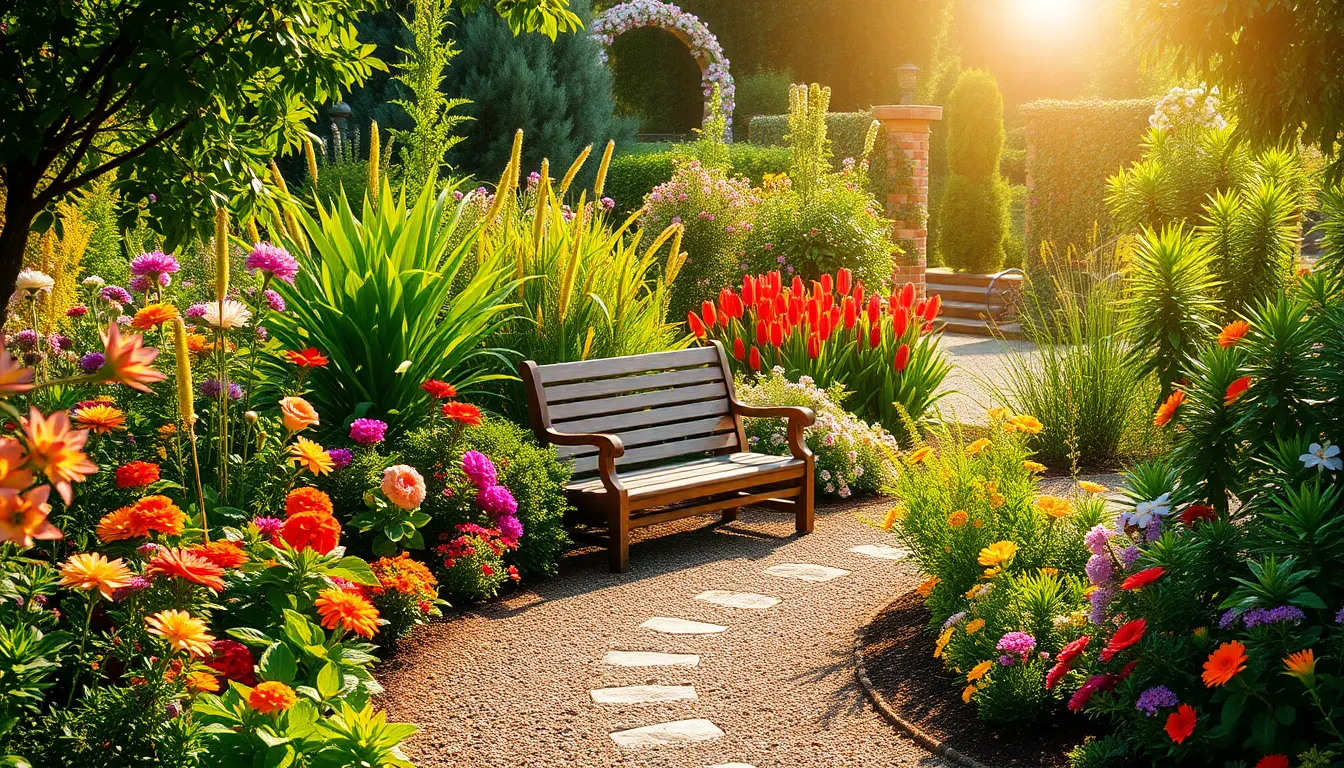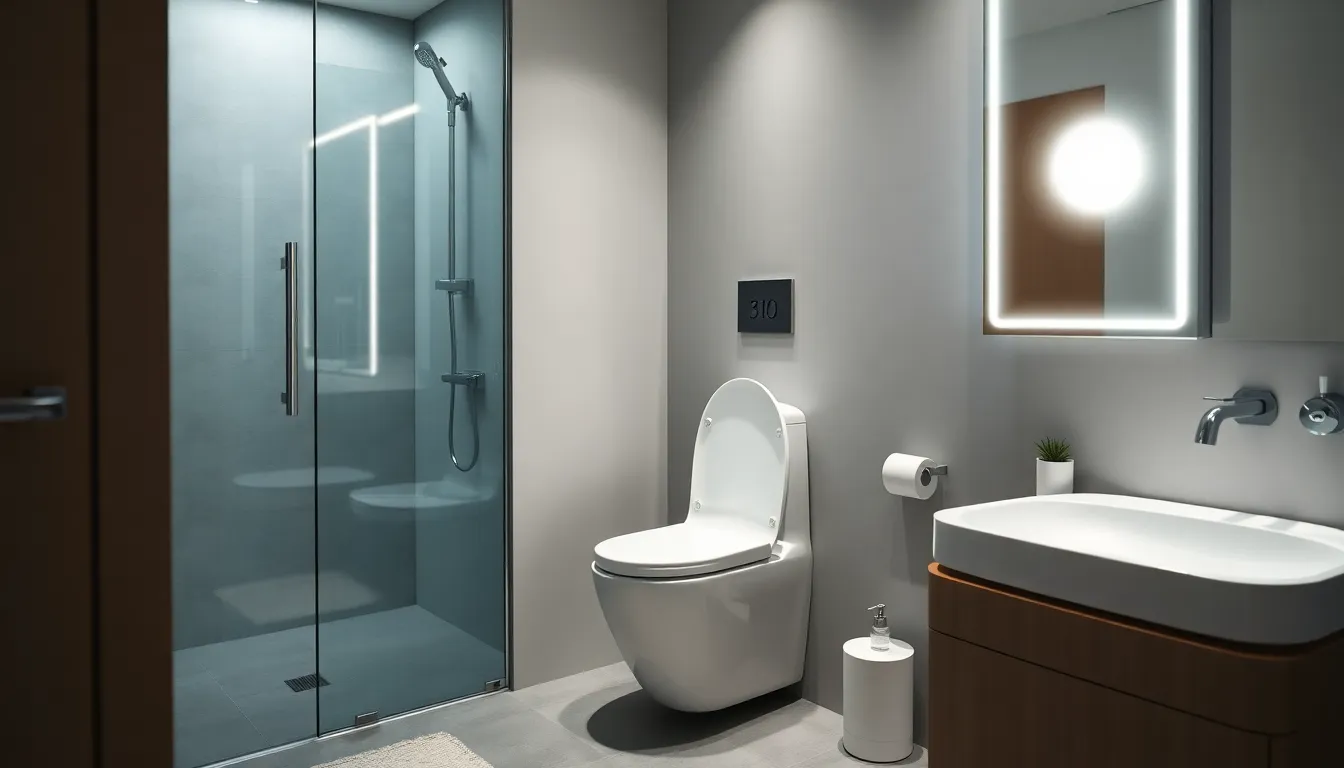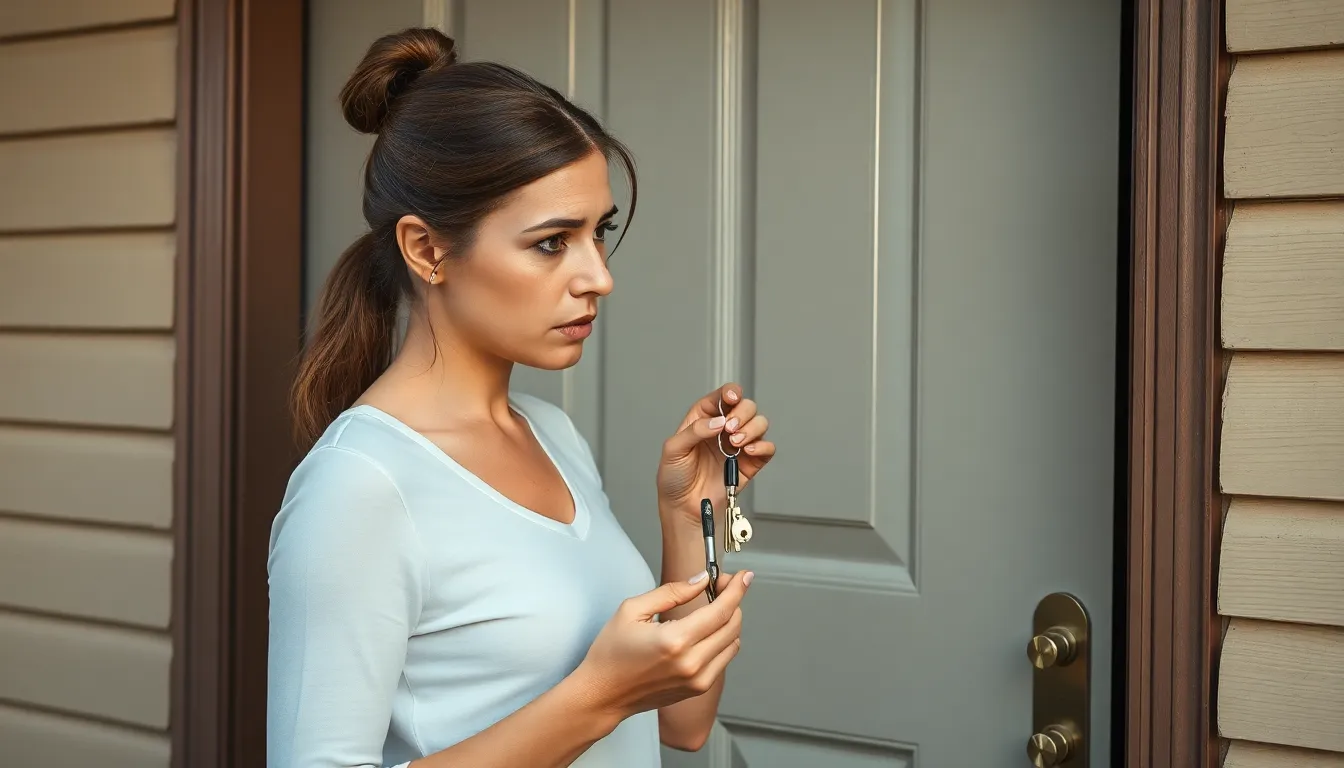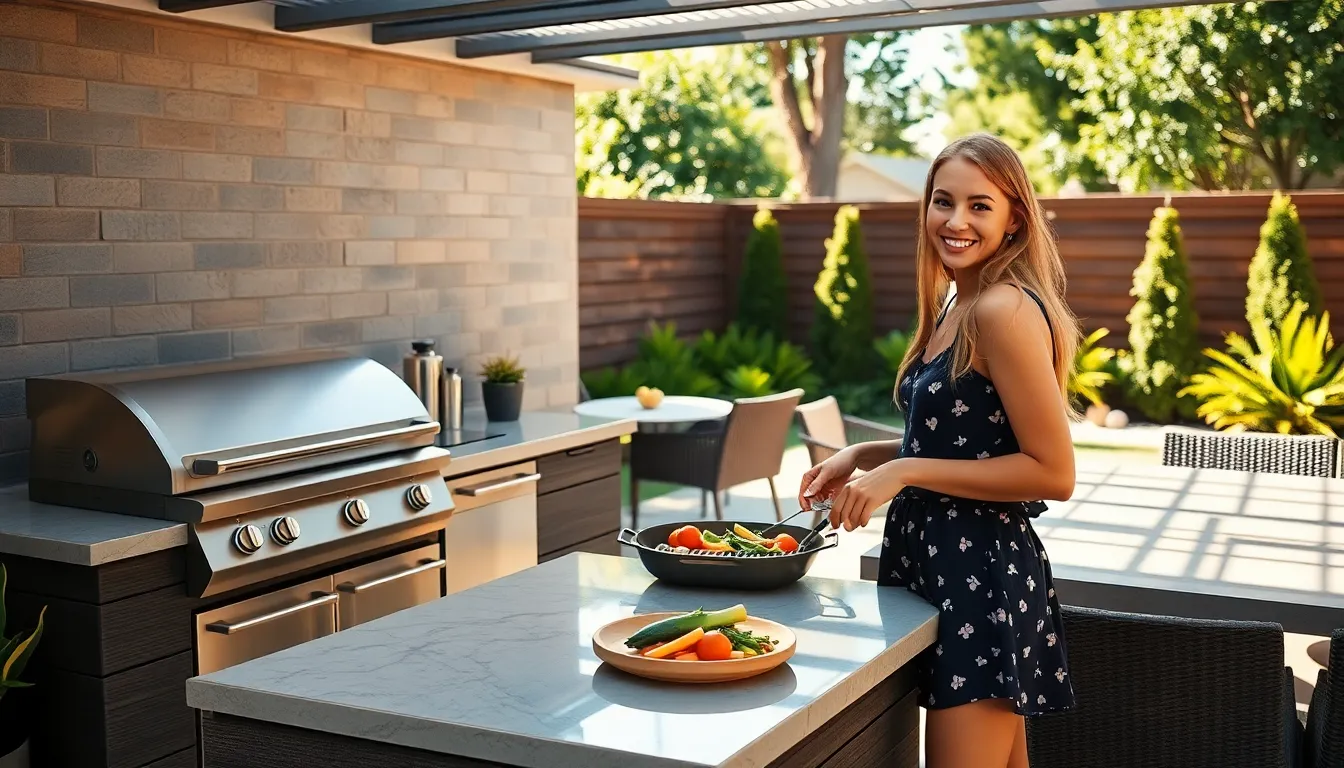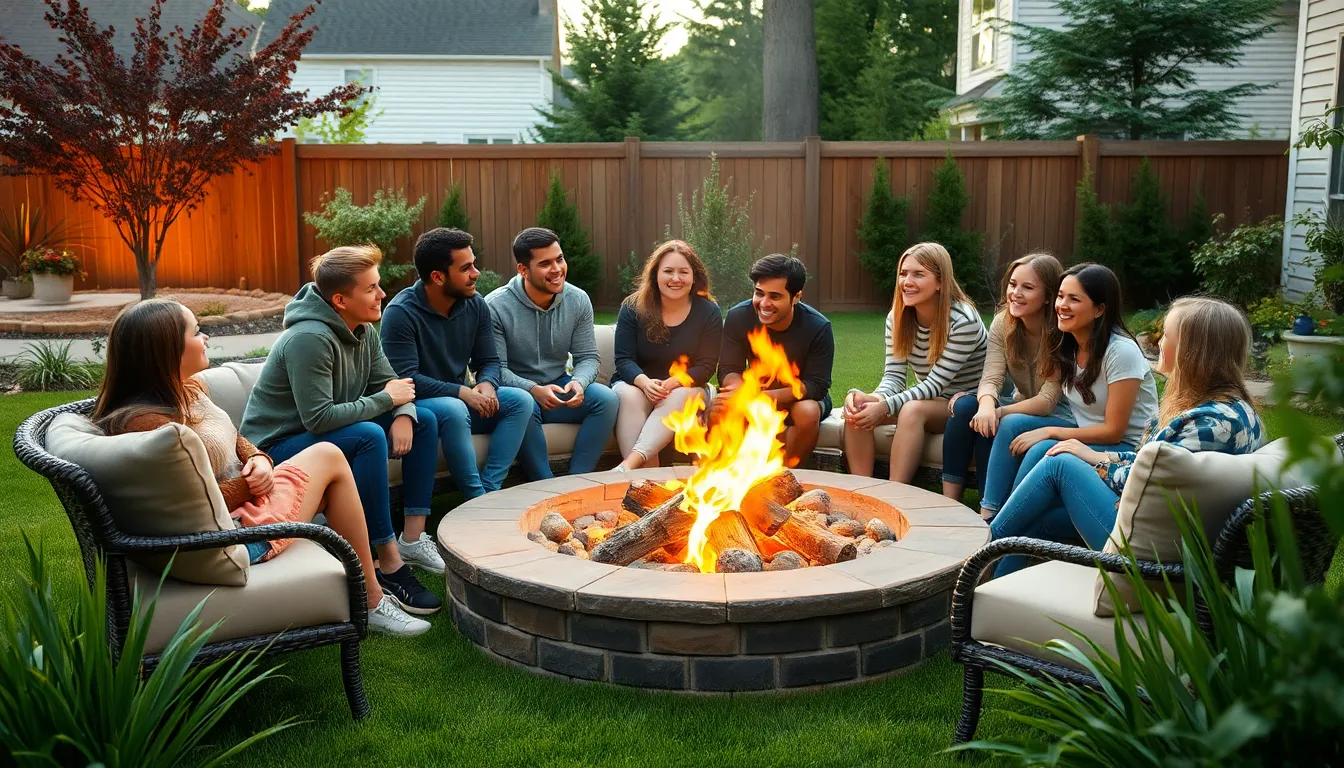Table of Contents
ToggleImagine stepping into a backyard that feels like a mini paradise, where every flower and shrub seems to whisper sweet nothings about tranquility and beauty. Garden design isn’t just about planting a few daisies and calling it a day; it’s an art form that transforms ordinary spaces into extraordinary escapes. Whether you’re a seasoned green thumb or someone who can barely keep a cactus alive, the right garden design can elevate your outdoor experience.
From whimsical pathways to serene seating areas, the possibilities are endless. With a sprinkle of creativity and a dash of planning, anyone can cultivate a garden that not only looks stunning but also reflects their personality. So grab your trowel and let’s dig into the world of garden design—where every corner can be a new adventure, and every bloom tells a story.
What Is Garden Design?
Garden design encompasses the art of planning and creating visually appealing outdoor spaces. This practice involves more than just planting flowers. Strategic arrangement of elements like plants, paths, and seating enhances functionality and aesthetic appeal.
A well-designed garden reflects personal style and integrates the surroundings. Designers often consider size and layout, ensuring harmony with the architecture of nearby buildings. Incorporating focal points, such as sculptures or water features, draws attention and encourages exploration.
Plants play a crucial role in garden design, offering color and texture. Selecting the right species based on climate and soil type ensures longevity and success. Varying heights and layering can create depth in a garden, making it visually dynamic.
Paths guide visitors through the space, enhancing navigation. Utilizing materials like gravel, stone, or wood establishes clear routes while complementing plant choices. Seating areas provide spots for relaxation and enjoyment, inviting individuals to immerse themselves in nature.
Lighting enhances gardens at night, spotlighting features and creating ambiance. Strategic placement of fixtures allows for nighttime use. Garden design also considers ecological aspects, promoting sustainable practices through native plant selections and water conservation methods.
Ultimately, garden design represents a thoughtful approach to outdoor living. Each element contributes to the overall experience, blending beauty with practical considerations. For enthusiasts, designing a garden offers endless opportunities for creativity and personal expression.
Key Elements of Garden Design
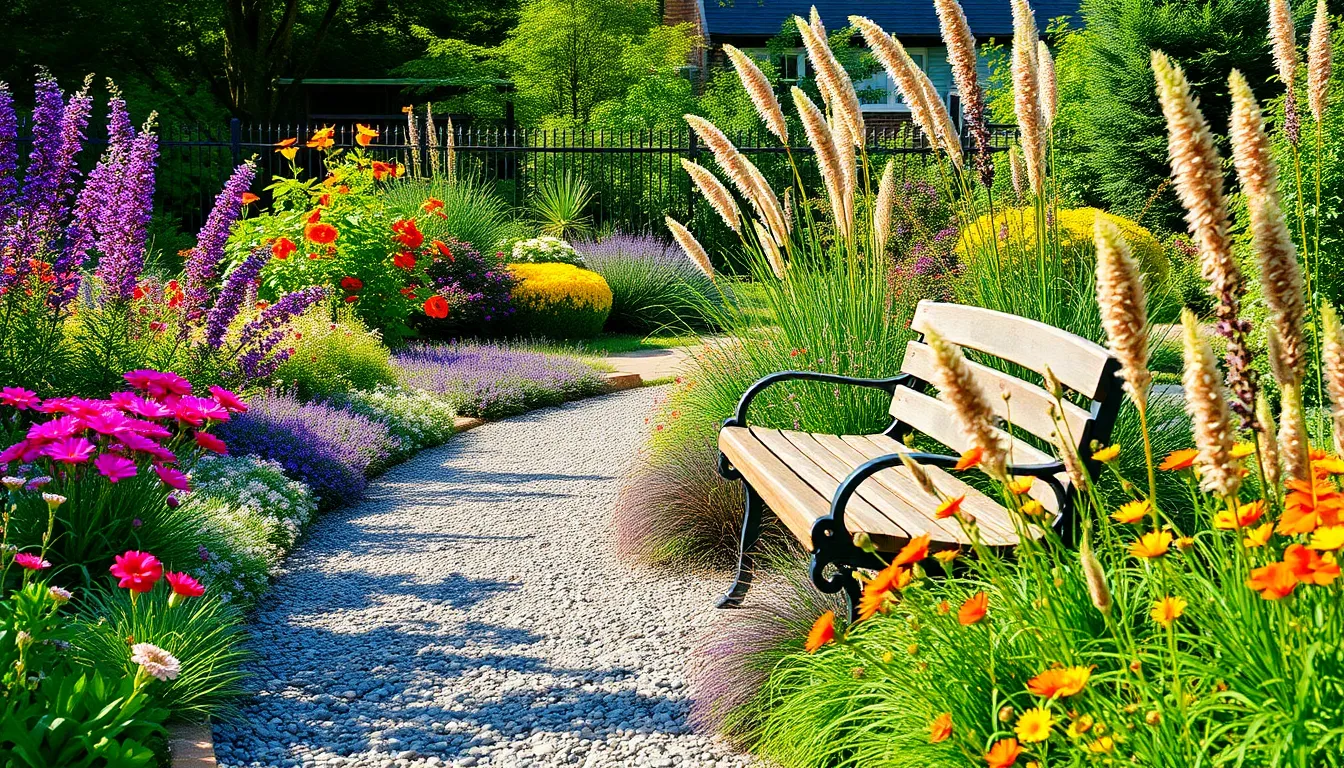
Garden design integrates various components, enhancing both beauty and functionality. Understanding these elements can help cultivate a personal oasis.
Plants and Greenery
Plants serve as the backbone of any garden, offering vital color and texture. Selecting species that thrive in local climate conditions ensures sustainability. Opting for layered plant heights creates visual interest and depth. Native plants contribute to biodiversity while requiring less maintenance. Incorporating seasonal blooms keeps the garden dynamic throughout the year.
Hardscapes and Structures
Hardscapes introduce a structural element to garden design. Pathways constructed from gravel, stone, or wood guide visitors and create flow within the space. Patios and decks provide gathering areas, enhancing functionality. Focal points like trellises or arbors add vertical interest and support climbing plants. Properly placed benches or gazebos encourage relaxation and enjoyment of the surroundings.
Color and Texture
Color selection significantly influences a garden’s mood. Combining contrasting hues creates vibrancy, while harmonious palettes promote tranquility. Texture variation, achieved through different leaf shapes and structures, adds layers to the visual appeal. Use ornamental grasses for movement and perennials for consistent foliage. Incorporating a mix of shapes keeps the eye engaged and enhances overall visual stimulation.
Popular Garden Design Styles
Various garden design styles offer unique ways to create outdoor spaces that reflect personal aesthetics. Each style incorporates distinct elements, contributing to a garden’s overall atmosphere and functionality.
Modern Garden Design
Modern garden design emphasizes clean lines and minimalism. Typically, this style utilizes geometric shapes and a limited plant palette, focusing on structure and simplicity. Sleek materials, like concrete and metal, often dominate hardscape elements, promoting a contemporary feel. Integrating technology, such as lighting and irrigation systems, enhances usability, making maintenance easier. Additionally, modern designs prioritize sustainability through drought-resistant plants and efficient water management.
Cottage Garden Design
Cottage garden design embodies a relaxed, informal style that encourages lush plantings and vibrant colors. Flowers and greenery often mix freely, creating a charmingly overgrown appearance. This design style typically features classic elements, like picket fences and winding paths, inviting exploration. Plant selection often includes fragrant blooms, herbs, and climbing plants to enhance sensory experiences. This approach provides an inviting atmosphere that fosters connection with nature and a sense of nostalgia.
Formal Garden Design
Formal garden design showcases symmetry and structure, often reflecting historical influences. It relies on geometric shapes, straight lines, and meticulously trimmed hedges to create a sense of order. Pathways paved with uniform materials lead visitors through the landscape, serving as focal points. Additionally, topiary forms and carefully placed sculptures add sophistication to the layout. Formal gardens frequently incorporate water features, such as fountains or ponds, enhancing visual appeal and tranquility.
Tips for Successful Garden Design
Successful garden design combines creativity and planning. The following tips guide the process.
Creating a Garden Layout
Start by assessing the outdoor space. Consider the sun and shade patterns throughout the day. Identify existing features like trees or fences that influence design. Draft a rough sketch to visualize the layout, marking areas for pathways and seating. Incorporate separate zones for flowers, vegetables, or recreational spaces. Design paths that encourage exploration, ensuring they’re wide enough for comfortable movement. Aim for a balanced distribution of elements to create visual harmony.
Choosing the Right Plants
Select plants based on climate and soil conditions. Native species often thrive with minimal care and promote local biodiversity. Think about seasonal interest, incorporating varieties that blossom at different times. Layering plants with varying heights adds depth and dimension. Group plants that share similar watering and sunlight needs to simplify maintenance. Consider foliage color and texture to enhance visual appeal year-round. Utilize perennials for long-lasting gardens, while annuals offer seasonal bursts of color.
Garden design is a journey of creativity and personal expression. By thoughtfully combining plants pathways and seating areas one can create a sanctuary that reflects individual style and enhances outdoor living. The blend of aesthetics and functionality transforms any space into a retreat that invites relaxation and enjoyment.
Embracing sustainable practices and selecting native plants not only beautifies the garden but also supports local ecosystems. Whether opting for a modern minimalist look or a vibrant cottage garden each design choice contributes to a unique outdoor experience. With careful planning and a touch of imagination anyone can cultivate their own slice of paradise.

